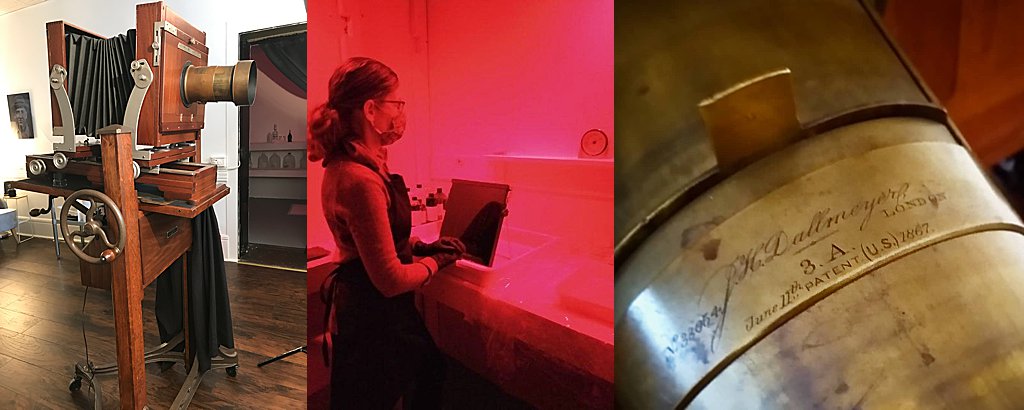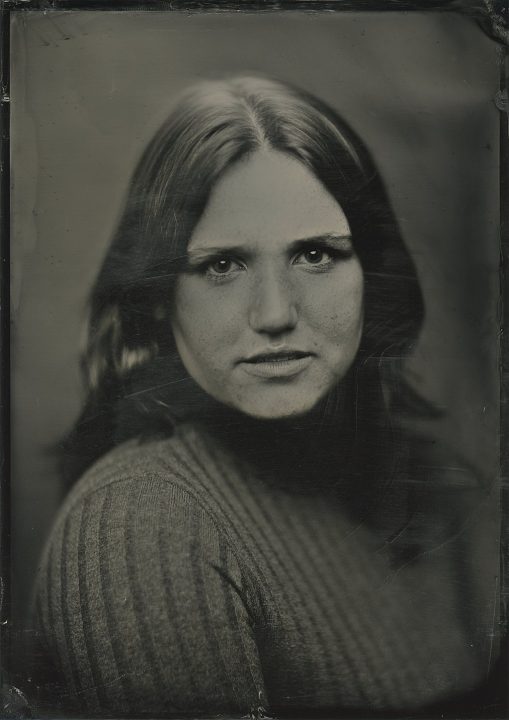Last summer, I began learning wet plate collodion (tintype) photography. These kinds of portraits are handmade, using a process that was invented in 1851. It’s very different from my other work.
I’m sort of a perfectionist, so it’s the flaws I’m learning to embrace. The chemicals can do wonky things sometimes. There is no Photoshop. There’s a bit of guesswork.

But there is a thrill when the portrait begins to appear in the fixer. Only then I find out whether the dozens of choices I made to create the image were good! Almost always, there is something I could have done better. Often, I love it anyway.
The result is a one-of-a-kind, physical object, a truly archival portrait, flaws and all.

